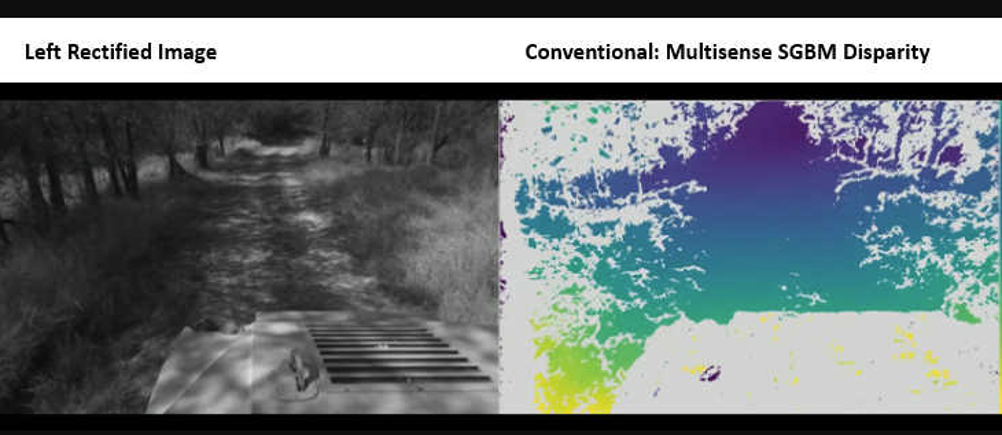SwRI engineers developed a suite of tools called VORA (Vision for Off-Road Autonomy), a passive system that perceives objects, models environments and simultaneously localises and maps while navigating off-road environments.
The researchers said this system could be an alternative to lidar (light detection and ranging), which emits active lasers to probe objects and calculate depth and distance.
Though highly reliable, the researchers said that lidar sensors produce light that can be detected by hostile forces, and radar, which emits radio waves, is also detectable. Similarly, GPS navigation can be jammed and its signals are often blocked in canyons and mountains, which can limit agricultural automation.
In a statement, Meera Towler, SwRI assistant programme manager and project lead, said: “For our defence clients, we wanted to develop better passive sensing capabilities but discovered that these new computer vision tools could benefit agriculture and space research.”

In space applications, autonomous robots are limited by power, payload capacity and intermittent connectivity. The researchers said that in space, cameras make more sense than ‘power-hungry’ lidar systems, and so also developed the VORA technology to explore planetary surfaces.
To overcome various challenges, the team developed new software to use stereo camera data for high-precision tasks traditionally accomplished by using lidar, including localisation, perception, mapping and world modelling.
SwRI developed a deep learning stereo matcher (DLSM) tool, which uses a recurrent neural network to create dense, accurate disparity maps from stereovision. A disparity map highlights motion differences between two stereo images.
To aid simultaneous localisation and mapping, SwRI also developed a factor graph algorithm to intelligently combine sparse data from stereo image features, landmarks, inertial measurement unit (IMU) readings and wheel encoders to produce highly accurate localisation data. Autonomous systems use factor graphs, or probabilistic graphical models, to make inferences by comparing variables.
“We apply our autonomy research to military and commercial vehicles, agriculture applications and so much more,” said Towler. “We are excited to show our clients a plug-and-play stereo camera solution integrated into an industry-leading autonomy stack.”
SwRI said it plans to integrate VORA technology into other autonomy systems and test it on an off-road course at its San Antonio campus in Texas.











McMurtry Spéirling defies gravity using fan downforce
Ground effect fans were banned from competitive motorsport from the end of the 1978 season following the introduction of Gordon Murray's Brabham...